Costa Rica With Kids- The Complete Guide
This post may contain affiliate links.
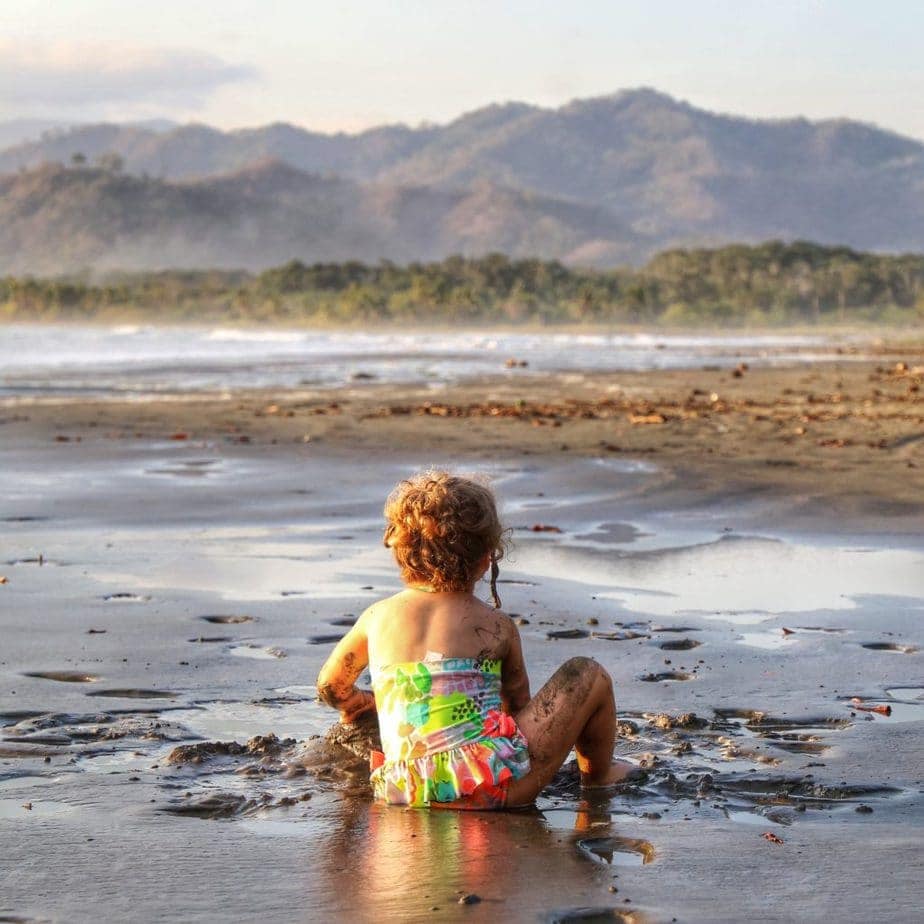
I absolutely can’t recommend visiting Costa Rica with your kids enough. For over 20 years, we have been traveling to, living in, and visiting Costa Rica- the last decade with our kids.
I often talk to people who feel like Costa Rica is a good first international trip for their family, and I couldn’t agree more. It’s safe, and friendly, and there is a LOT to do. Like, a LOT.
I wanted to give my readers the most comprehensive guide on the internet to planning your trip to Costa Rica with kids. While this guide is for visiting with kids, I also think that almost anyone can benefit from the topics in here. There’s everything from tipping formation to currency to a recommended itinerary. And if you don’t find what you need in this post you can call me!

About Costa Rica
Costa Rica is located in Central America, between Nicaragua and Panama. It houses approximately 6 million people who refer to themselves as “ticos.” Costa Rica is safe. There’s no army, and guns are heavily restricted. This makes it the safest country to visit in Central America and one of the safest countries to visit in Latin America.
Costa Rica is also one of the most biodiverse countries in the world, and every year millions of people enter the country ready to experience the best in the world as far as eco-tourism. From rainforests to pristine beaches, there is really something for everyone. And the country is relatively small, so in a week you can easily expect to visit both the beach and the tropical rainforest.
The national language is Spanish, but because education through university is free, you’ll find many ticos who are fluent in English and Spanish. If you are thinking of brushing up on your Spanish before you go, there are lots of basic Spanish phrases for travel you can brush up on. Or, just use some Costa Rican slang to say “pura vida!”
Speaking of pura vida– it’s the national slogan- meaning “pure life.” Pure life because life is laid back, things work at a slower pace, and people aren’t in a hurry. Pure life also because Costa Rica is home to some of the longest-living people in the world. Costa Rica is what’s called a Blue Zone- where the Costa Rican food and the laid-back lifestyle contribute to a high number of centenarians per capita.
Ok, so we know about Costa Rica, but why is it good for kids? Keep reading.
DON’T MISS: Guide to Planning a Trip To Costa Rica For Your Family
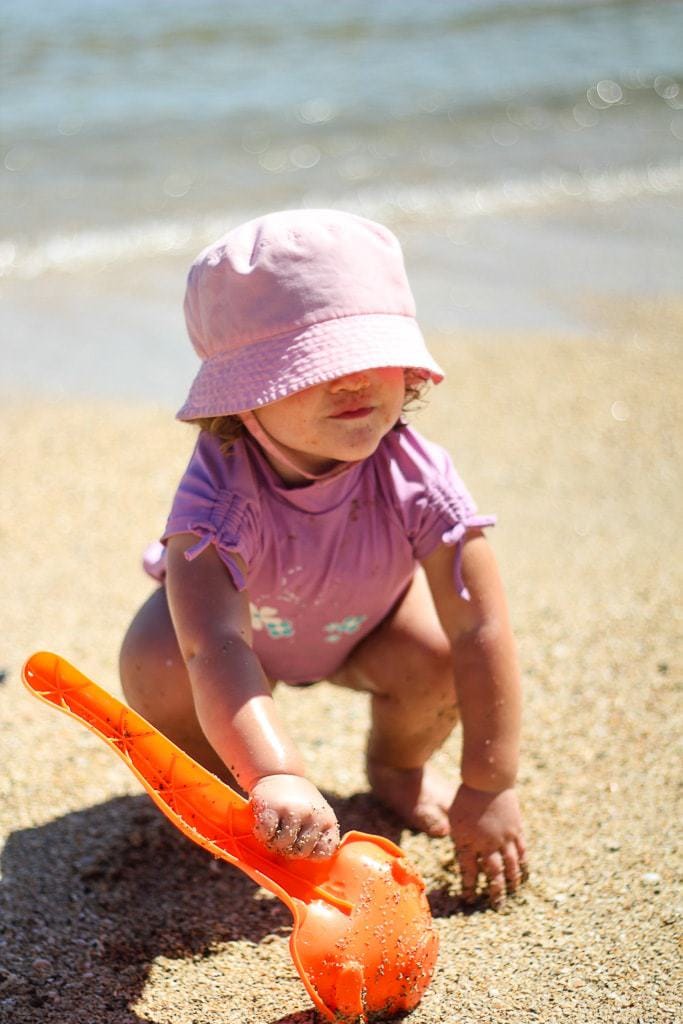
Why Costa With Kids Is SO Great
The short answer- Costa Ricans value family. This means that children are treated with respect and love by everyone. Costa Rica really does have a village to raise its kids.
Because of this, families often travel with their kids, and they expect safe and happy places to take their children. You’ll see car seats and boosters available at rental car agencies, high chairs in every restaurant, and many trails accessible with a stroller in Costa Rica.
So many of the guides in the rainforest and on tours are mothers and fathers, so they know just how to work with kids during the tours. Children are an integral part of society- and it shows at every level. So many people tell me Costa Ria is the best first international trip for families, and I could not agree more.
Plus- Costa Rica with kids is super fun! The second you step off the plane you can have animal sightings, gorgeous weather, and lovely people to greet you. I’ve hiked the rainforest, milked cows, seen sloths and monkeys, made sugar cane candy, beach hopped, and more- all with my kids. They can never get enough of Costa Rica and are always begging to go back. It’s their favorite place in the world!
YOU’LL ALSO LIKE: Top Places to Stay in Costa Rica with Kids
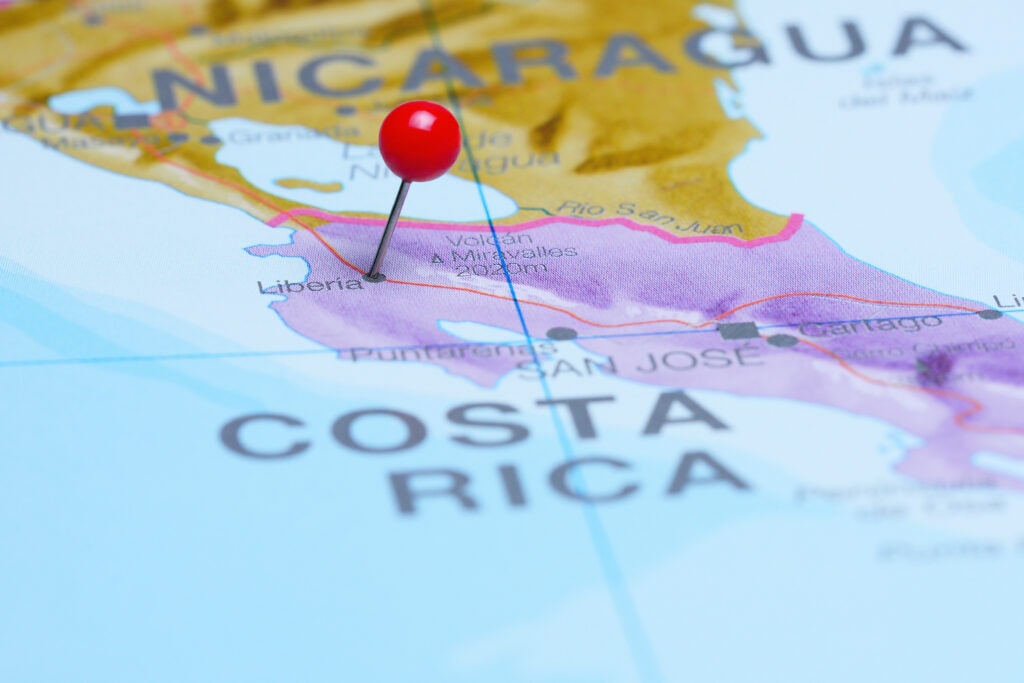
Things To Know About Costa Rica With Kids
As you determine if Costa Rica is the right international destination for you and your kids, you likely have a lot of questions about logistics. These are the most frequently asked questions people have when they talk to me about Costa Rica.

Water In Costa Rica
When talking about water in Costa Rica, the greatest thing to know is that the water is safe to drink. Costa Rica has invested millions of dollars into its infrastructure to ensure safe drinking water for all. Costa Rica has made a promise to be carbon neutral by 2030, and eradicating plastic bags and plastic water bottles is a huge step toward that goal.
So bring your favorite reusable water bottle and drink the water in Costa Rica- it is safe!
Cell Phones In Costa Rica
You’ll definitely want to be able to use your cell phone in Costa Rica. You essentially have two options- you can buy a local SIM card and put it into an unlocked phone, or you can use your data plan from the United States.
If you decide to rent a car, many will come with either GPS or a cell phone with data/wifi hotspot for a small additional fee.
KEEP IN MIND: Driving In Costa Rica
Mosquitos in Costa Rica
The next question I always get is about mosquitos in Costa Rica. How bad are they, what are the diseases they carry, and what is the best bug repellent I can take?
What I can tell you is that there are lots of mosquitos in Costa Rica, and there are especially a lot during the rainy season. You’ll want to avoid bug bites as much as possible, which is totally doable with the right bug repellent and/or long sleeves. Make sure you read my guide about mosquitos in Costa Rica for everything you need to know.
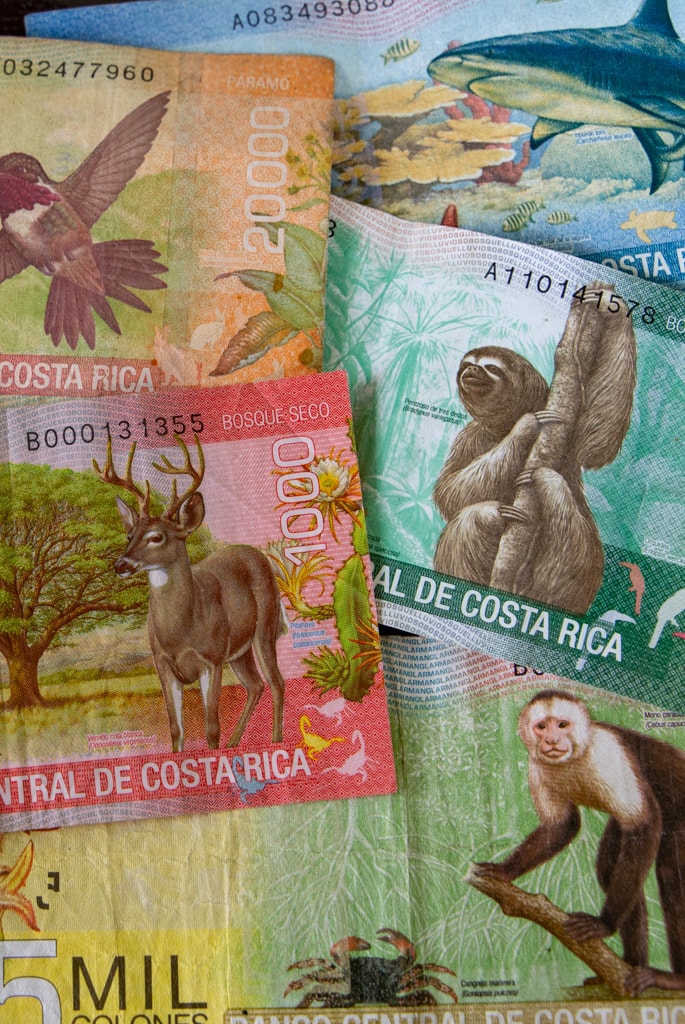
Costa Rican Money
Everyone needs to pay for things, and everyone wants to get the best exchange rate- am I right?
You’ll find that many tour operators use the US Dollar in Costa Rica, and sometimes Bitcoin is even accepted at hotels. The local currency, however, is the colon, named for Christopher Columbus.
In the last few years, the colon has hovered just around 500 per $1. Consider reading my guide about Costa Rican currency if you want to know all the intricacies of local money.
Voltage In Costa Rica
Do I need a converter for electronics? Everyone wants to know. And the short answer is no. Visitors from the US can use their electronics in Costa Rica, business as usual. If you aren’t from the US, make sure to read our guide to voltage in Costa Rica, complete with recommendations or the best converters for Costa Rica.
Packing For Costa Rica
We all know packing for ANY international trip with kids can be a headache, but Costa Rica for some reason seems more complicated. It’s usually because people are packing for the beach AND the rainforest in the span of a few days.
Add that to the fact that Costa Rica is humid! Clothes don’t dry as quickly or as easily as they do in other parts of the world. The best advice I can give you is to read my Costa Rica Packing List. But a couple of quick tips? Avoid cotton clothing as it is hot and doesn’t dry. Always pack a jar of peanut butter for picky eaters.
RELATED POST: 7 Days in Costa Rica – With Kids!
Strollers and Baby Gear in Costa Rica
Just a quick Google search of “baby gear in Costa Rica” will show you several options for renting baby gear in many of the popular beach towns in Costa Rica. If your destination offers that service, I recommend just doing that.
Otherwise, for strollers, we generally took umbrella strollers that are easy to fold up and put in a rental car. The downside to umbrella strollers is that they may not be stable enough if you are on rocky or bumpy terrain.
Once we had both girls and were walking a lot in town, we took a Bob stroller and that was super nice. If you aren’t completely sold on the idea of taking a stroller, I would take a really good baby carrier. You can always get an umbrella stroller when you get there if you really need one.
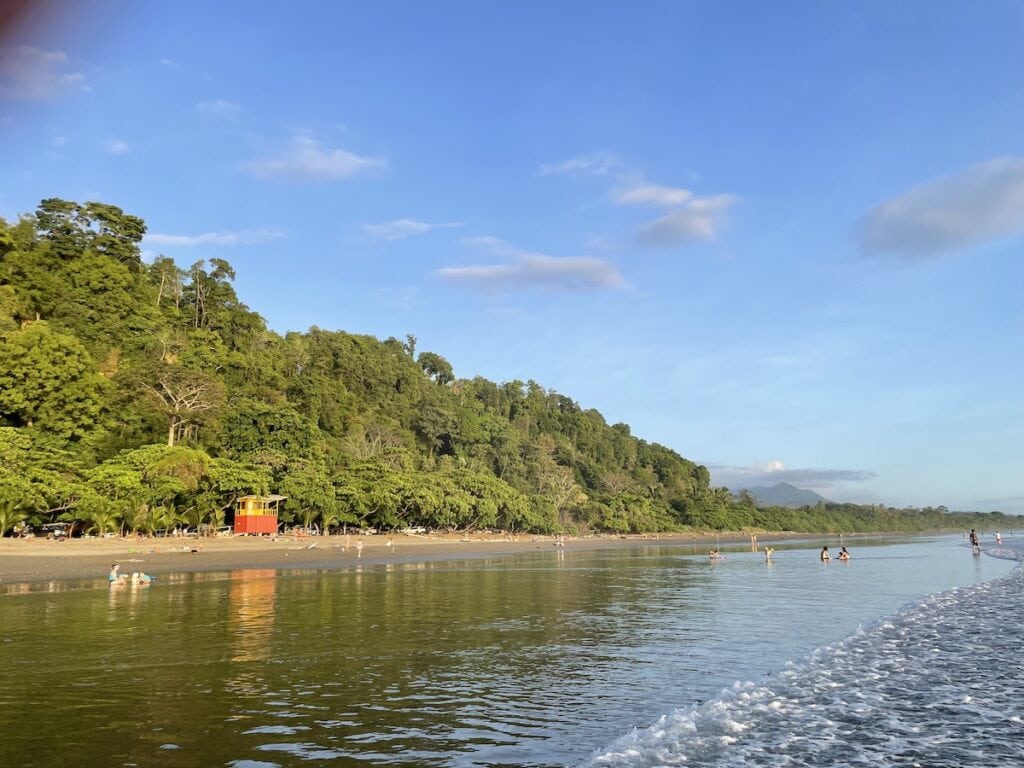
Best Time To Visit Costa Rica
I say the best time to visit Costa Rica is anytime!
In all seriousness, there are pros and cons to almost any time you want to visit Costa Rica with kids. True summer is December-May, and you’ll see very little rain during those times. However- it can get very hot during those months too.
The rainy season is May-November. It’s characterized by, for the most part, daily rains, generally in the afternoon. These rains can cool things off though, and the sunsets during the rainy season can be epic.
The best time, in my opinion, to visit Costa Rica is during the veranito de San Juan, which occurs during the second two weeks in July.
I would definitely avoid the last two weeks in October and the first two weeks in November as the rains tend to be absolutely torrential during this time. The one caveat is the Caribbean coast can be nice during that time.
READ MORE: ULTIMATE GUIDE To Costa Rica Weather
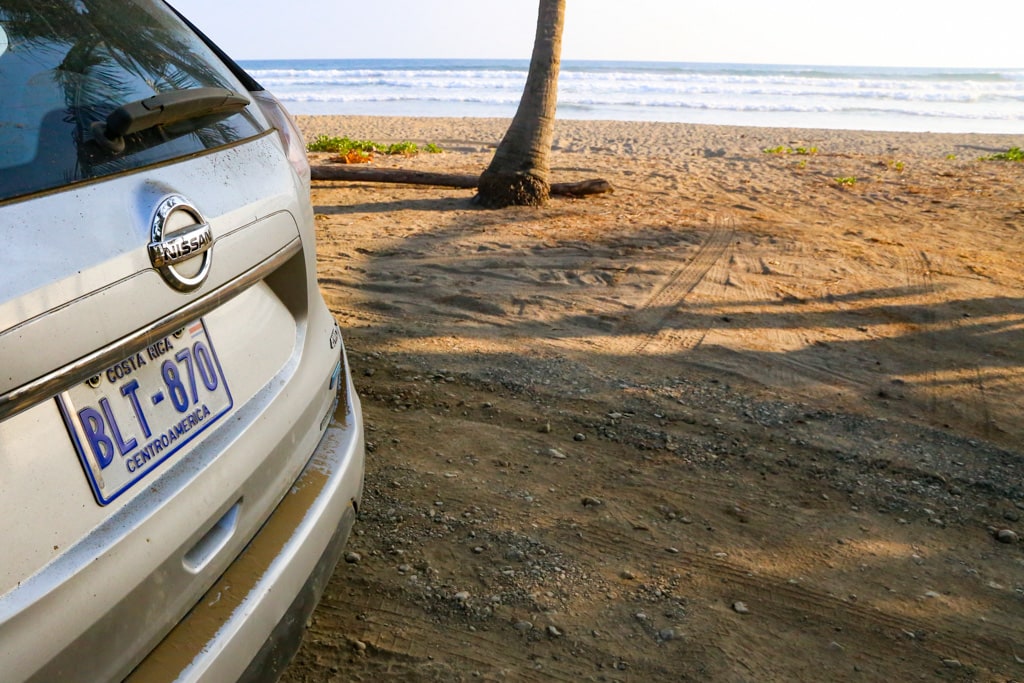
Getting To And Around Costa Rica
Arrival In Costa Rica
The majority of people who travel to Costa Rica with kids do so via air. They fly into one of two international airports- the San Jose International Airport or the Liberia International Airport. Both have their pros and cons- if you are wondering which airport to fly to then make sure to check out our guide.
You’ll need a valid passport to enter Costa Rica, and it must not expire within 90 days of your visit. You’ll also need proof of exit via land or air in order to enter the country. The easiest way to do this is to book a return flight and have the ticket ready to show the agent. You’ll have an automatic 90-day tourist visa when you enter the country unless the immigration official tells you otherwise.
Getting Around Costa Rica
Once you have successfully entered Costa Rica, you’ll want to have a plan for getting around Costa Rica.
I highly recommend renting a car in Costa Rica, and I use Adobe Rental Car. I even have a 10-20% car rental discount that I can pass on to you.
I recommend renting a car because in Costa Rica with kids, for the money, you get a lot of freedom to travel where you want to go without having to rely on taxis, which can get expensive. When you just use shuttles, you have to invest in transport in and around the place you are visiting if it isn’t walkable. And who doesn’t love to beach hop or visit the most fun hot springs at their destination?
If you have a slightly bigger budget, you would definitely want to hire a private driver with a guide that stays with you 24/7. This person can make impromptu stops based on your interests, spot wildlife at the drop of a hat, and can give you tons of extra information about Costa Rica that you can’t get from a regular Costa Rica travel guidebook.
Some families will ask me about getting around Costa Rica by public bus. This is definitely the cheapest option for in-country travel. I shy away from recommending this because the buses can take a long time, they are hot, and the stops are unpredictable. It’s a recipe for disaster with young kids.
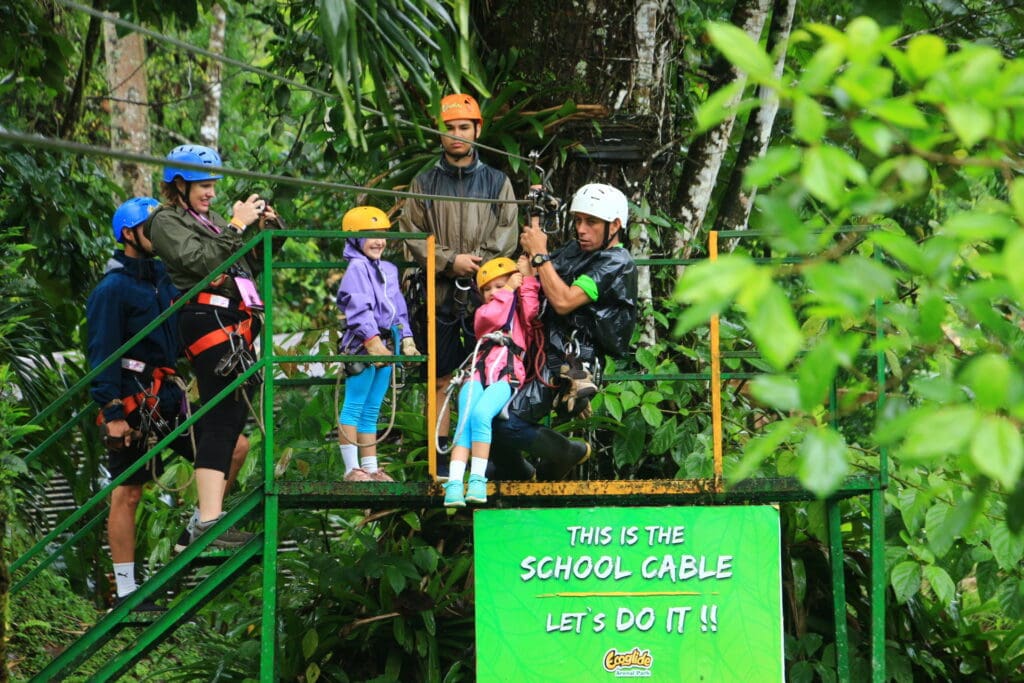
Top Things To Do In Costa Rica With Kids
The best part about Costa Rica with kids is all the family activities. From infants to teens, there is something for everyone to do in Costa Rica.
That doesn’t mean every activity is for every age, though. When you are looking to book a tour to try an activity, definitely reach out to find out the best ages for the activity. For example, some zip lines don’t accommodate kids under 4, or some horseback riding places only let kids over 7 ride alone. I always say just reach out directly to the agency and find out what they are comfortable with. Here are some of the top Costa Rica excursions– in no particular order.
Zip Lining
Zip lining in Costa Rica is epic. I mean, what is cooler than flying through the rainforest at high altitudes? For a lot of kids (and adults!), nothing. Zip lines are super cool because of the adrenaline rush, and because of the unique perspective you gain from the treetops.
Our absolute favorite zip line is Eco Glide in La Fortuna, but you can find lines from as far south as Drake Bay to as far north as Rincon de la Vieja. The Monteverde Cloud Forest is especially well known for its zip-lining- The Original Canopy Tour is very kid-friendly.
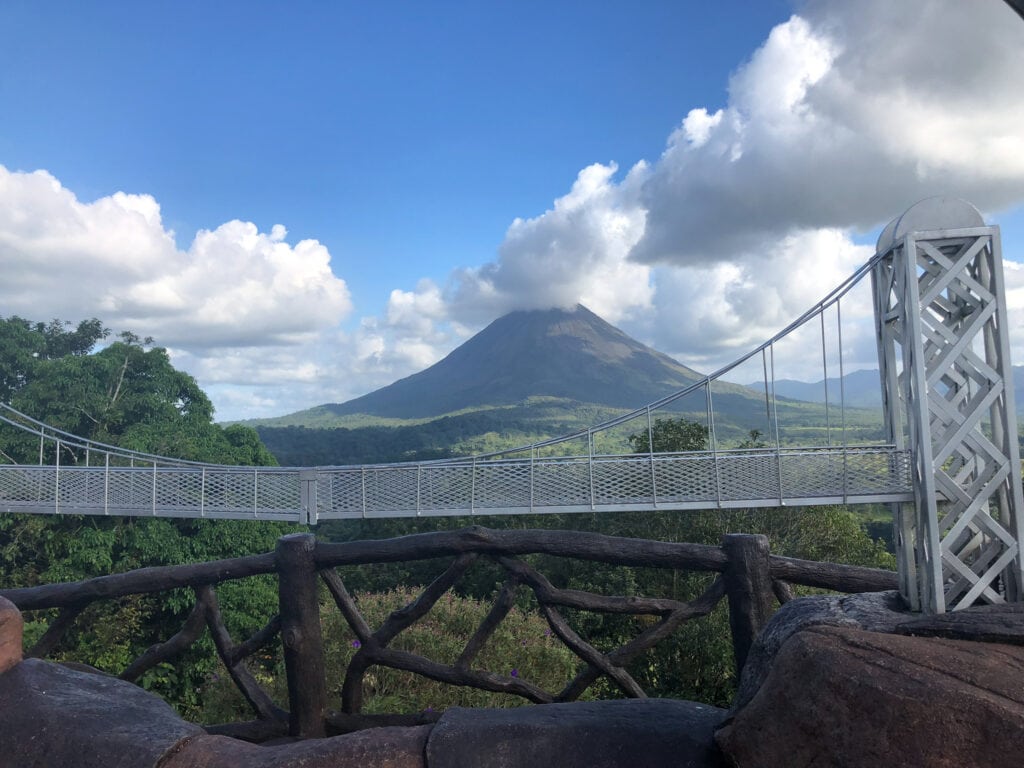
Hanging Bridges
If you aren’t an adrenaline junkie but still want to experience the thrill of the treetops, the hanging bridges in Costa Rica are probably for you.
There are two types of hanging bridges in Costa Rica- static and swaying. With varying heights and a good guide, you can easily see lots of birds and maybe even sloths and monkeys as you walk. Our absolute favorite hanging bridges are in La Fortuna- they are the Mistico Hanging Bridges.
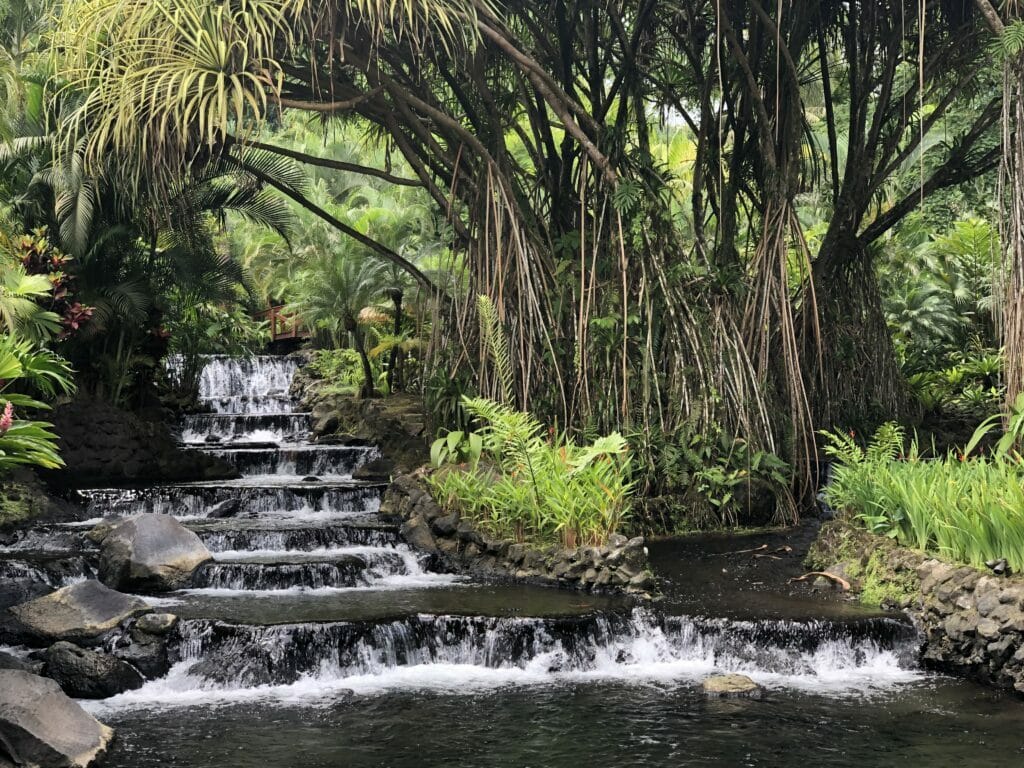
Visit The Hot Springs
With over 50 volcanos in Costa Rica, there are an endless number of awesome hot springs you can visit. Everywhere from Manuel Antonio to northern Guanacaste have hot springs if you just know where to look.
Our favorite hot springs are Kalambu Hot Springs for the kids and Baldi Hot Springs for the whole family. Both are in the La Fortuna/Arenal area.
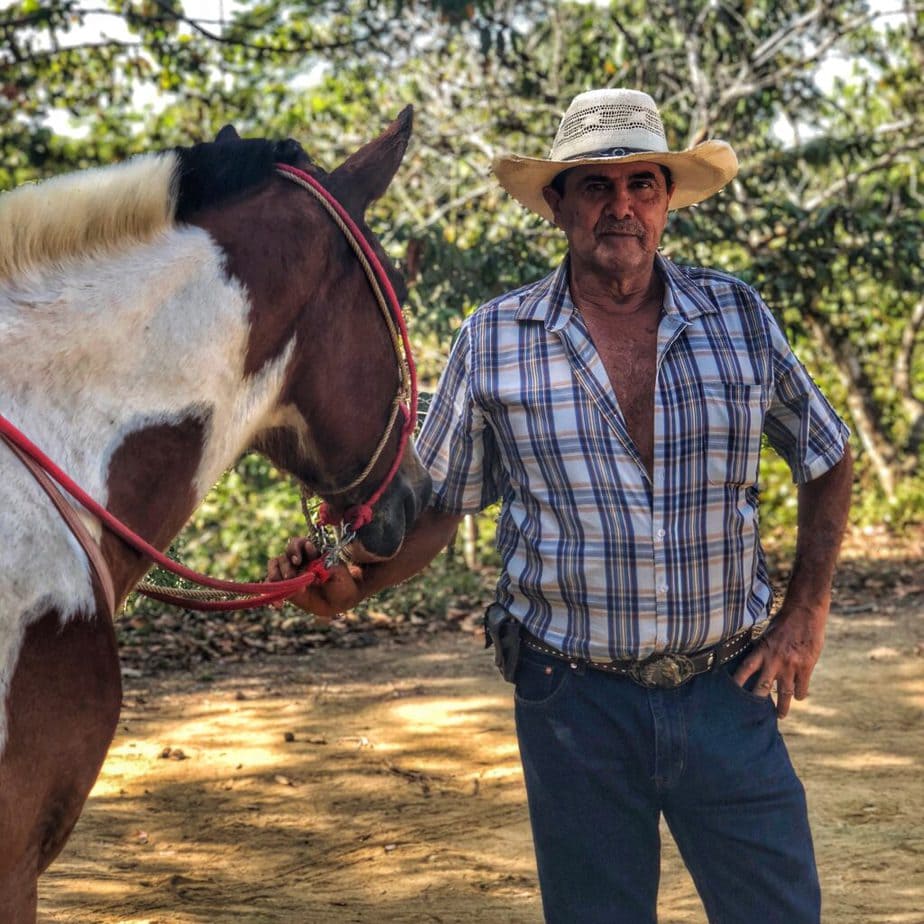
Horseback Riding
Kids love to ride horses, and riding along a popular beach or through the rainforest can be beyond magical. We love to do Jaco with kids horseback riding, and our favorite jaunt through the coffee country is at Finca Libertad Pura near San Ramon.
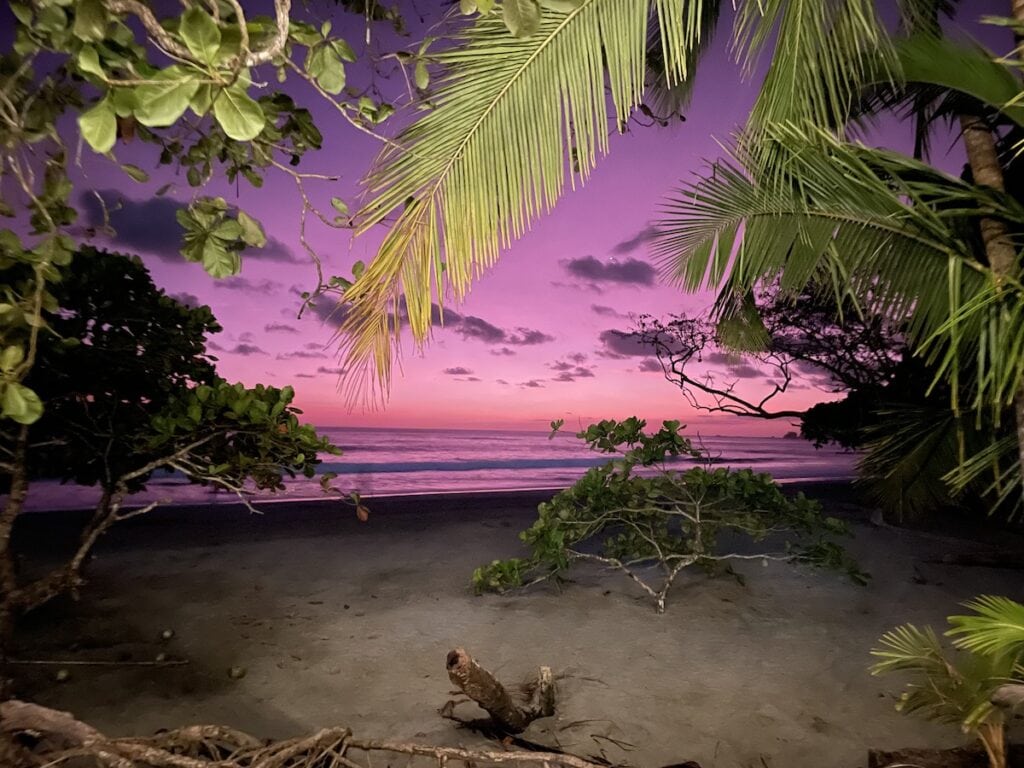
Catch A Beach Sunset
When. you are at a popular Pacific Coast Beach in Costa Rica, you absolutely can’t miss a Costa Costa Rican sunset. You just can’t. They are beyond epic. So grab a Costa Rican cocktail, a comfy beach chair or a towel, and you’ll have a front-row seat to nature’s magic.
Learn To Surf
Kids that can swim can learn to surf, and the instructors in Costa Rica are second to none. Just pick a popular surfing beach (mine’s Dominicalito) grab a rash guard, and prepare to have the time of your life.
Most surf camps don’t require advance reservations. I often see entire families learning to surf together- so definitely don’t discount this activity for the adults either.
Rappelling
Adrenaline junkies- this one is for you. There is nothing more thrilling than rappelling down a waterfall in the Costa Rican rainforest. Many tour operators offer rappelling alongside zip lines, and at Hacienda Guachepelin near Liberia, you can pair both activities with horseback riding.
Our favorite company for rappelling is Maquique Adventures in La Fortuna. Older kids will love the thrill- the minimum age is 7 to participate.
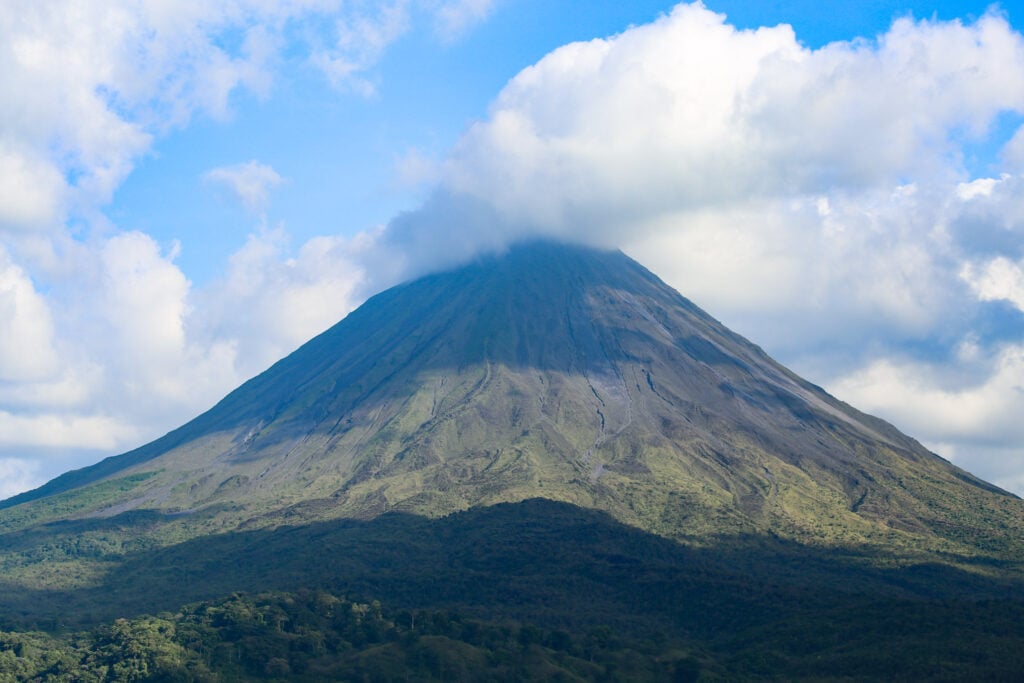
Visit A Volcano
There aren’t that many places in the world where you can visit an active volcano- and Costa Rica has 6. Whether you are looking into the crater at Poas Volcano or soaking in the epic hot springs at Volcan Arenal, you’ll definitely want to visit a volcano.
One of our favorites is Irazu- it looks like another planet!
Visit A National Park
There are almost 40 national parks in Costa Rica, and they all offer something unique. From lounging on the white sand beaches of Manuel Antonio National Park to watching turtles at night in Tortuguero National Park, you will find something to love in each of the national parks.
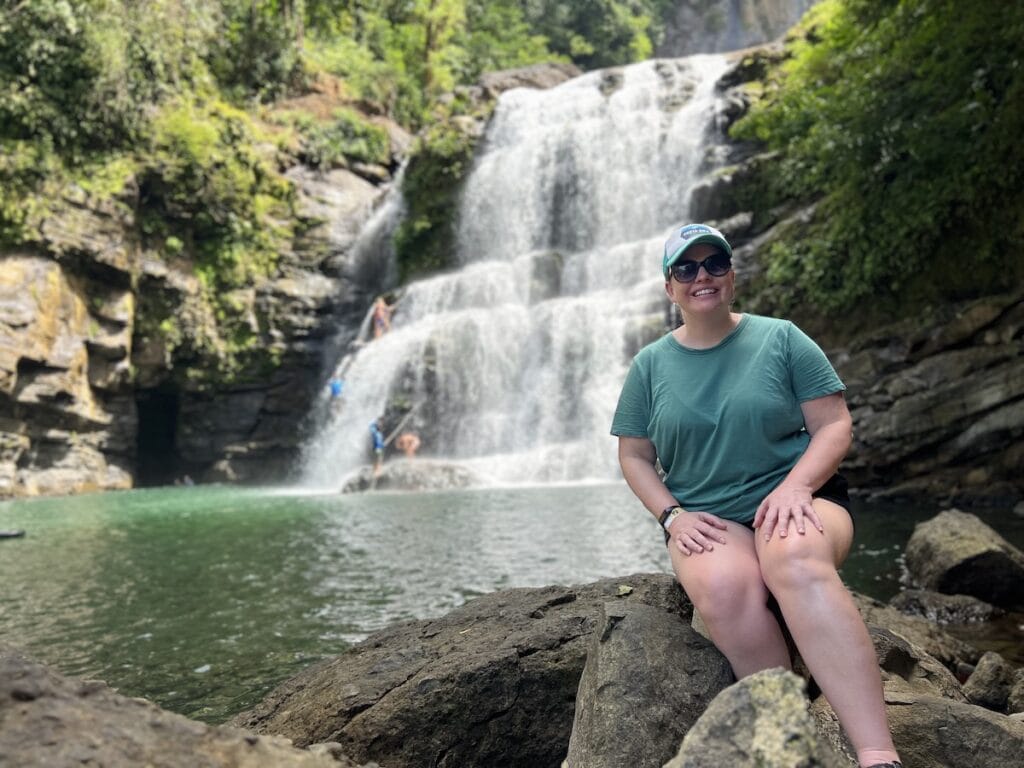
Chase A Waterfall
Almost anywhere you go in Costa Rica, there’s a waterfall nearby. The best Costa Rica waterfalls are in places you would least expect, so don’t be afraid to ask a local where there’s one near you.
We have lots of favorite waterfalls- from the Las Musas waterpark to the Rio Celeste waterfall, the Nauyaca waterfalls to La Leona. And the entire Bajos del Toro area will delight you with endless waterfall hikes.
Hiking
All you need is the right pair of shoes for Costa Rica and a good guide, and you can hike for days. The best hikes with kids are between 3-5 kilometers and make sure to bring plenty of water.
My take on hiking is that you can see lots of wildlife on your own, but if you have a specific hike you want. to do then hire a guide. It’s worth every penny to have animal sightings of creatures you never knew were lurking in the rainforest canopy.
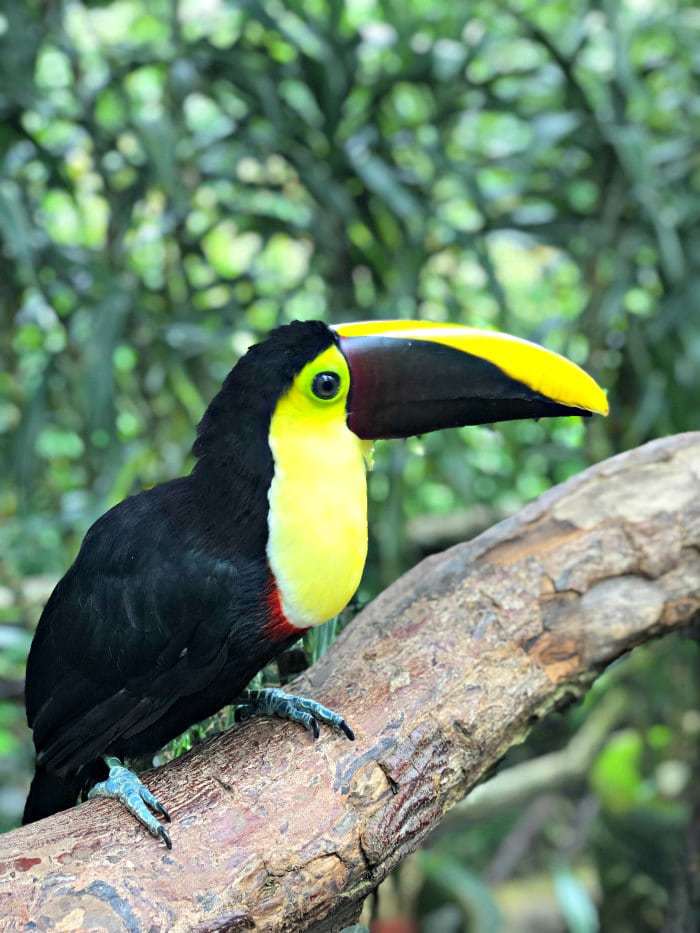
Visit An Animal Sanctuary
If you have little kids who want to see wildlife but aren’t good at being super quiet in the forest or aren’t patient enough to wait, then animal sanctuaries are the way to go.
Kids can enjoy seeing animals that have been rescued and rehabilitated, and they can learn more about specific species by seeing them up close. We love La Pumas Rescue Center in Guanacaste, La Paz Waterfall Gardens in Vara Blanca, and Zoo Ave near the San Jose International Airport.
Turtle Watching
Every year millions of turtles return to Costa Rica to lay their eggs. Some of the best places to see the sea turtles are in Tortuguero National Park and Cahuita near Puerto Viejo – or really at any of the Caribbean beaches in Costa Rica.
You can also see the turtles nesting year-round at Junquillal Beach, and in the high season (July) at Ostional in the Nosara area.
Snorkeling and Scuba Diving
Who doesn’t love the calm of seeing sea creatures in their natural habitat? Snorkeling either off the shore of a beautiful beach or off the back of a catamaran is magical.
Scuba diving is also popular in Costa Rica, and the best place to make your home base (if you aren’t doing Cocos Island) is Playas del Coco.
Our favorite places to snorkel are in the Marino Balleno National Park, Cano Island, Turtle Island, Playa Blanca, and Conchal Beach.
Take A Cooking Class
One of the most family-friendly activities I can think of is taking a cooking class! You’ll learn how to cook traditional Costa Rican food and enjoy learning more about the culture in the process.
We love Vida Campesina cooking classes in La Fortuna, but there are also cooking classes around the country that you can do.

Night Tours
You will adore seeing all the crazy insects and snakes that come out after dark. Don’t try to spot wildlife on your own, however. You’ll want to do this tour with a certified guide. Our favorite place is Eco Centro Denaus in La Fortuna, but we also had a pretty wicked night tour at Rancho Margot.
Coffee Tour
Coffee is king- Costa Ricans drink their traditional coffee multiple times a day. You’ll want to sample some of the best coffee in Costa Rica while you are there. Kids will love to learn how coffee is grown and processed, and the coffee tours are generally a lot of fun for all ages. Plus, it’s fun to watch the faces of kids who are trying coffee for the very first time.
We love the Espiritu Santo Coffee Tour near Naranjo, and visitors flock to the Hacienda Alsacia Starbucks tour. Other popular tours are the Don Juan Coffee Tour in Monteverde, and the Cafe Britt tour near San Jose.
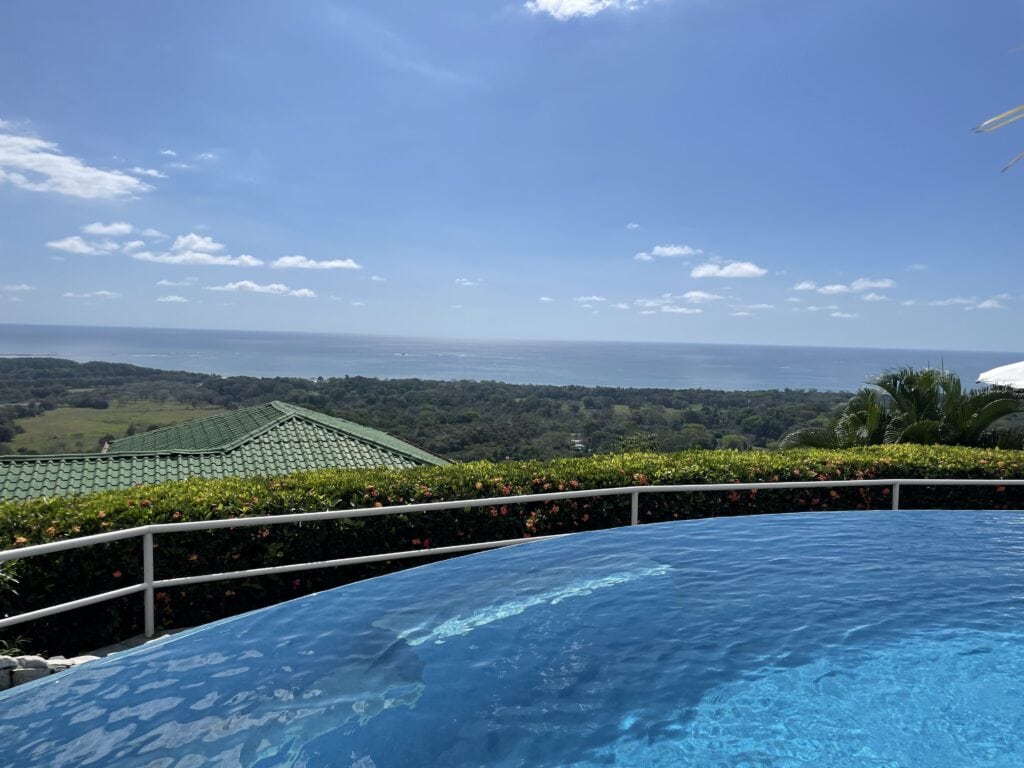
Where To Stay In Costa Rica
There are so many awesome places to stay in Costa Rica that where to choose pretty much boils down to what type of accommodations you are looking for. Want luxury family? Costa Rica’s got them. Always wanted to stay at a family farm? There are tons to choose from. Want to completely unplug at an all-inclusive resort? That’s an option too. Here are some of our favorite places.
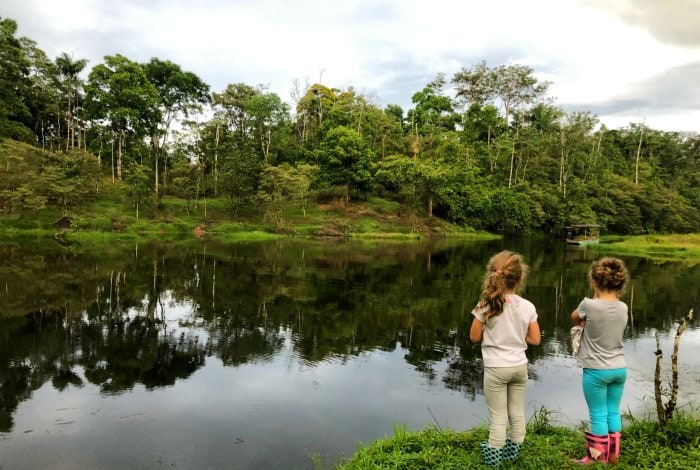
Costa Rica Farm Stays
Staying at a Costa Rican farm is pretty epic. You’ll generally have home-cooked meals, attentive staff, and unique accommodations. While staying at farms, our girl shave learned to ride horses, milk cows, and collect eggs from the chicken coop.
A few of our favorite places to stay at Casitas Tenorio, Rancho Margot, and La Carolina Lodge.
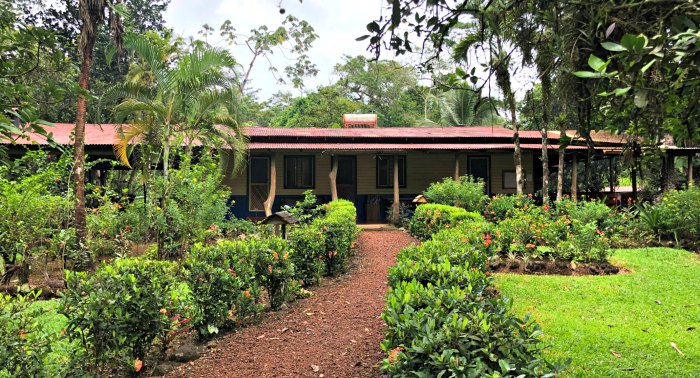
Stay At An Eco Lodge
Eco Lodges offer a minimalist approach to accommodations, and nature is the star. You’ll often find farm-to-table meals and simple, yet comfortable accommodations. We love the Tides Eco Resort on Playa Junquillal. Poor Man’s Paradise near Corcovado National Park is another favorite. And don’t forget the Rafiki Safari Lodge halfway between Dominical and Uvita.
Glamping
What’s better than sleeping in a tent on the beach? Sleeping in a tent, in a real bed, with air conditioning on the beach. Try Manoas in Uvita, or Chira Glamping on an island where you can see the bioluminescence at night.
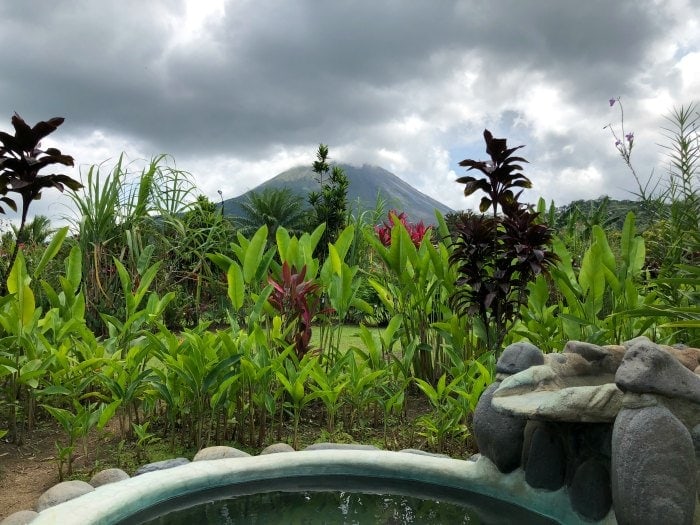
Hot Springs Resort
You can stay at numerous resorts that have their own hot springs– these are usually near a volcano like Arenal or Rincon de la Vieja. Think relaxing soaks before bed and swim-up bars. We love the Volcano Lodge and Springs near Arenal, Baldi Hot Springs, and Hacienda Guachepelin near Liberia in Guanacaste.
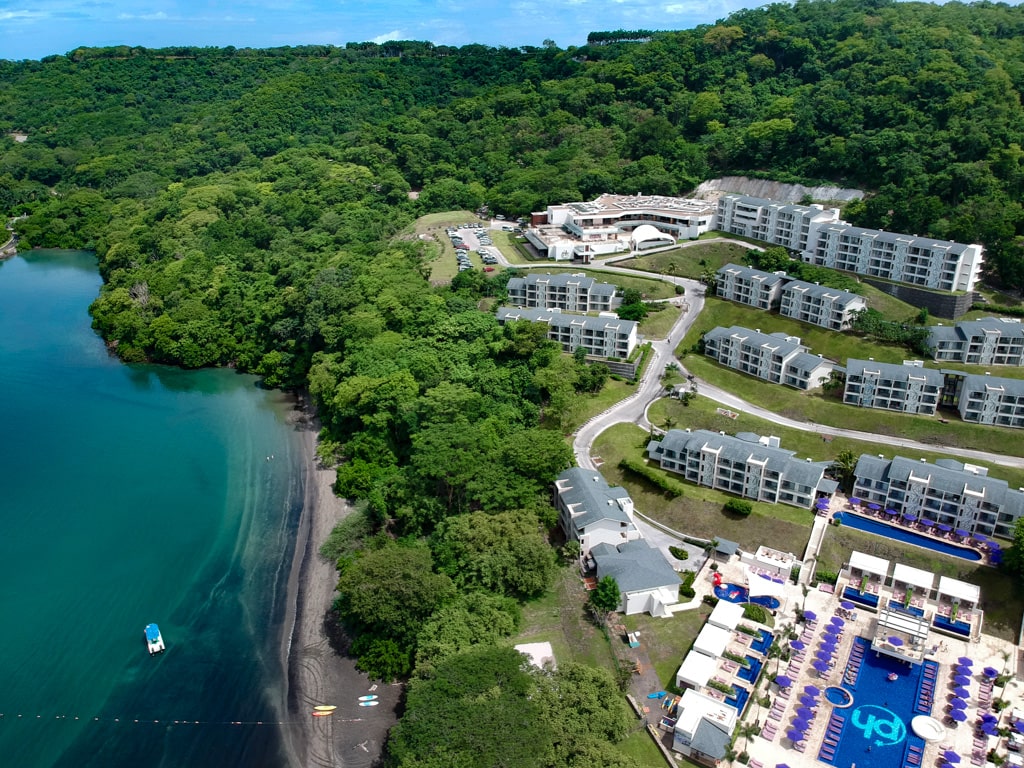
Go All-Inclusive
When you don’t have to think about anything- all-inclusive hotels are the way to go in Costa Rica with kids. They can often be great because there are Kid’s Clubs, so mom and dad can get a break once and a while too.
We adore Planet Hollywood, and Margaritaville Resort at Playa Flamingo is super family-friendly. You can also check out the Westin Conchal or the Riu Palace.
Go Luxe
Costa Rica has some gorgeous high-end luxury hotels where you’ll be endlessly pampered- beach or rainforest included. We love Oxygen Jungles in Uvita, and the Four Seasons Resort is rife with hidden private beaches.
Don’t forget about the Springs Resort in Arenal or the the Si Como No Hotel in Manuel Antonio.
What To Eat In Costa Rica
The base of Costa Rican food is white rice with black beans– foods most kids love. You’ll also find an array of Costa Rican fruit, which is always fun to try! You won’t find spicy or weird flavors- the national sauce is Salsa Lizano and it’s usually served on the side. Kid-friendly foods are on almost every menu- think French fries and chicken fingers. Worst case scenario? Pack a jar of peanut butter- it’s not easy to get in Costa Rica. Here are a few of our favorite foods to eat in Costa Rica:
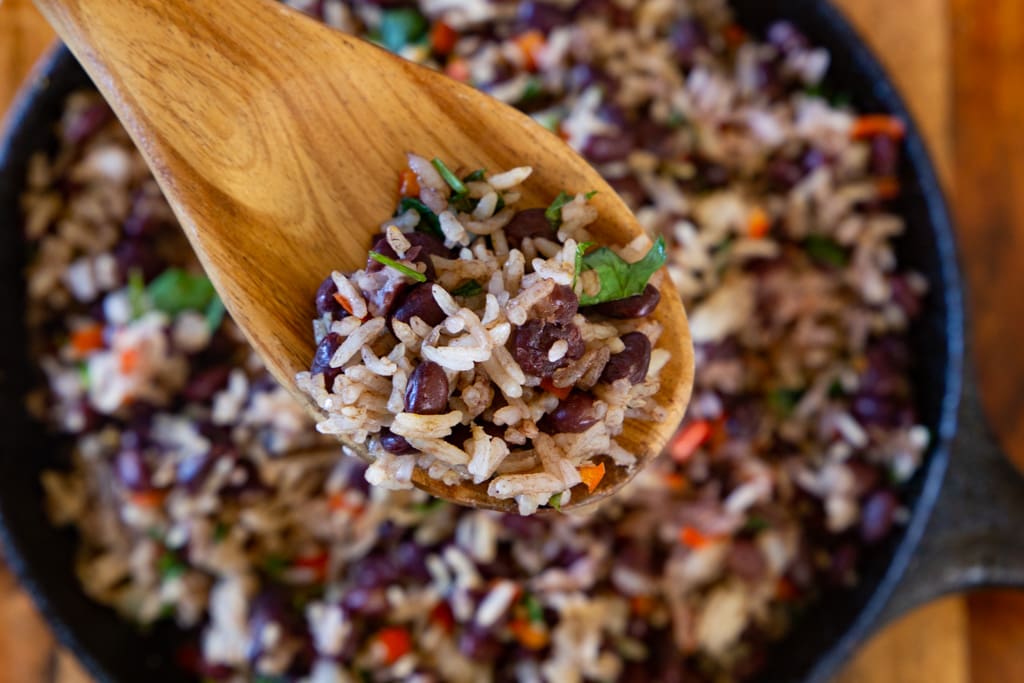
Gallo Pinto
Gallo pinto is the national dish of Costa Rica. It’s a combination of stir-fried veggies (finely chopped onion, red pepper, and cilantro) and white rice, and black beans. It’s a vegetarian food, a vegan food and a gluten-free food– and it’s so so good. Kids and adults will love it as part of a heart Costa Rican breakfast.
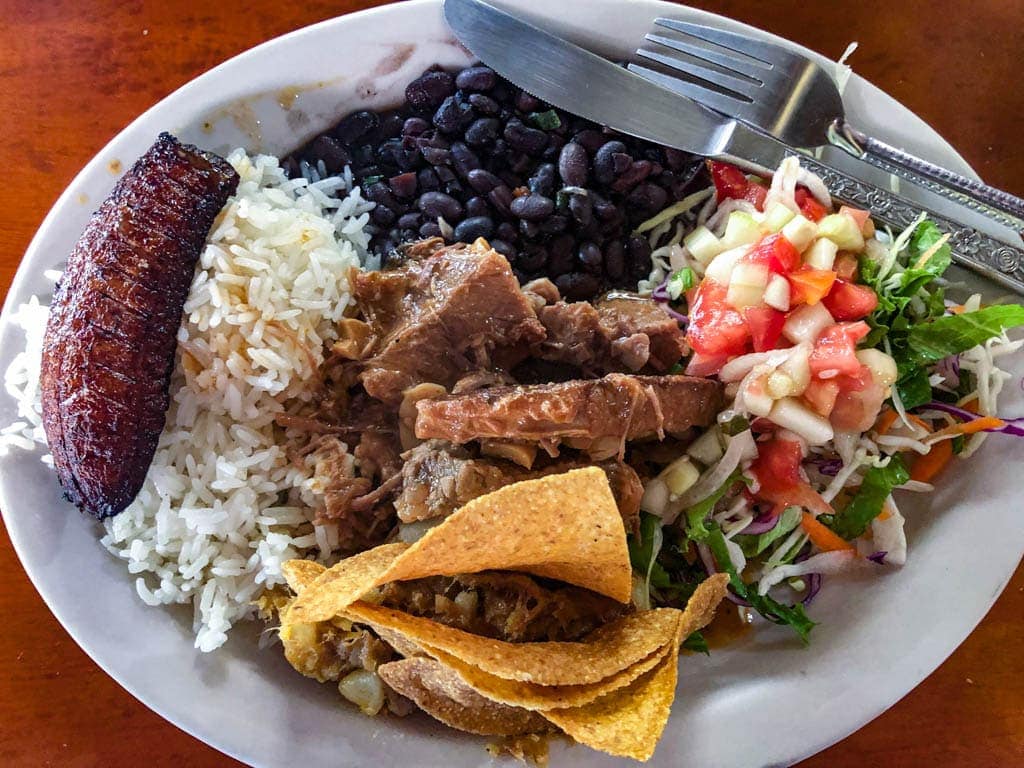
Casado
Casado literally translates to “married” in Spanish, but it’s really just the traditional lunch. Made up of (you guessed it!) white rice, black beans, salad, a protein like chicken or fish, and fried ripe plantains, it’s the perfect lunch for anyone.
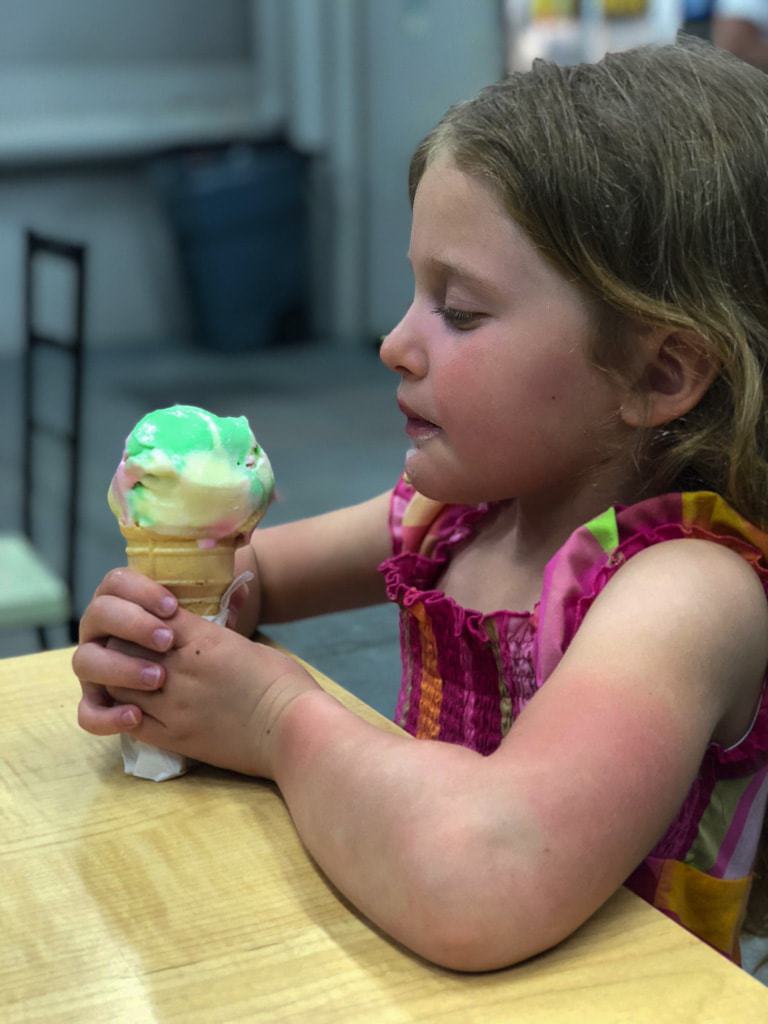
Ice Cream
Most Costa Rican ice cream is homemade from fresh fruit, and it’s to die for.
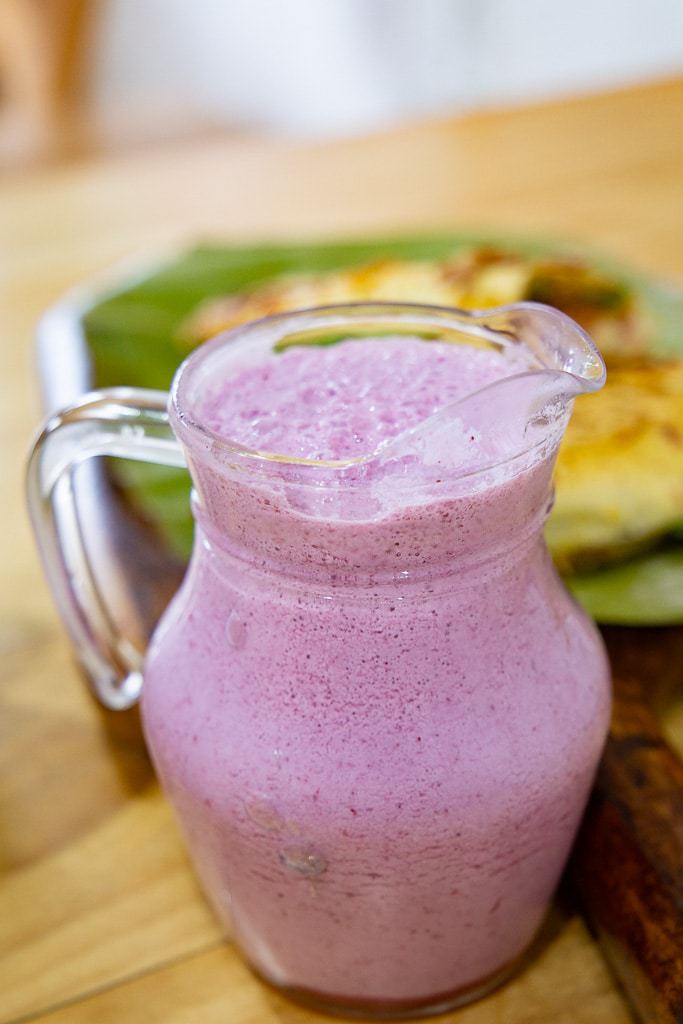
Batidos
These fresh fruit juices are made from all kinds of fruit: pineapple, blackberry, watermelon, papaya, guanabana and more. You can ask for them con leche too- making a sweet milkshake your kids will love- and they’ll stay hydrated.
RELATED POSTS YOU’LL LOVE:
PACKING FOR COSTA RICA: Costa Rica Packing List For Families

Christa Jimenez
Welcome! I’m Christa, a Spanish teacher married to a handsome Costa Rican and mother of two bilingual daughters. We’ve spent over 25 years living in and traveling to Costa Rica with our daughters, and this website is my love letter to all things Costa Rica- and to bilingual parenting too. You can read my full story here. Thanks for stopping by!



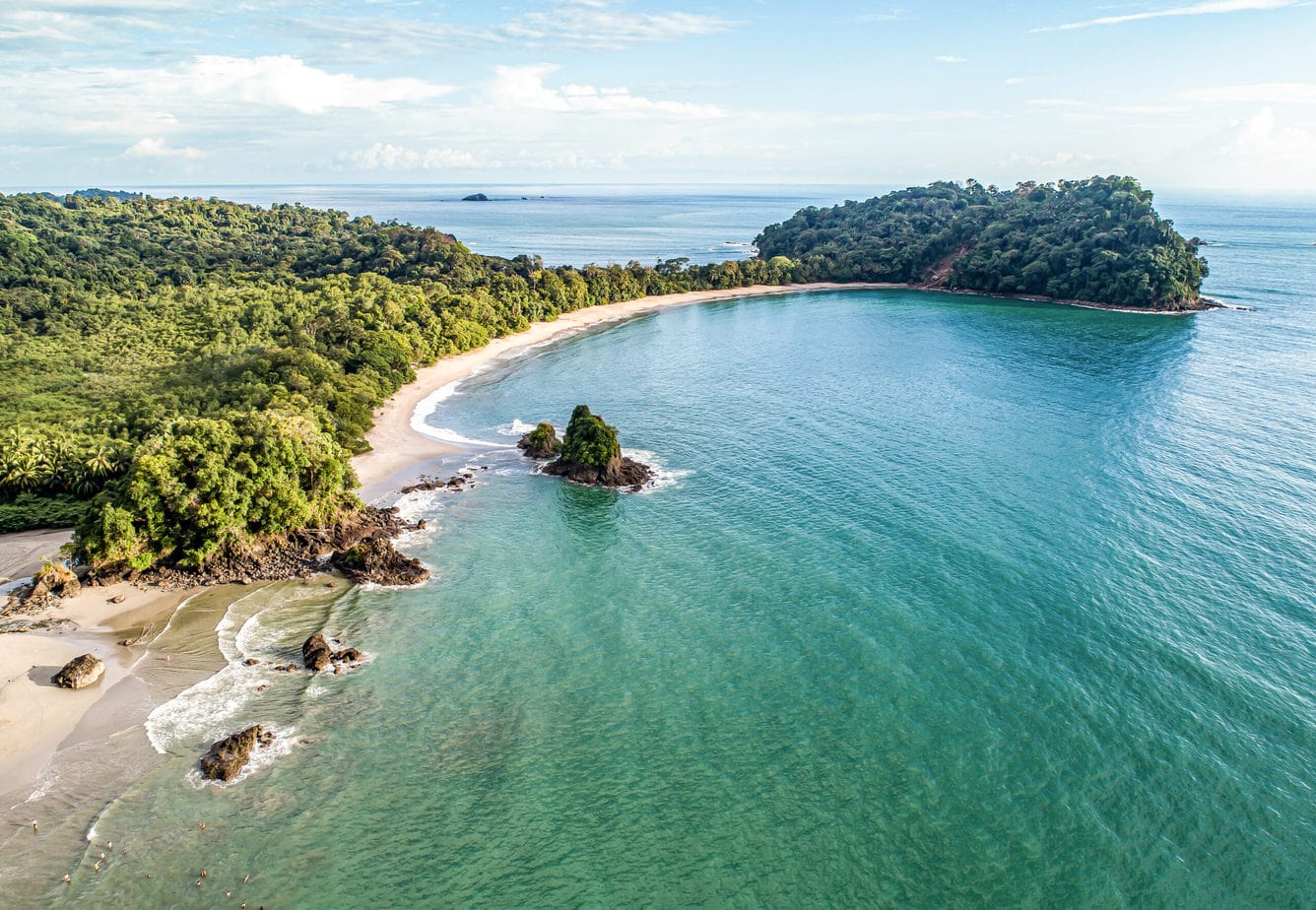
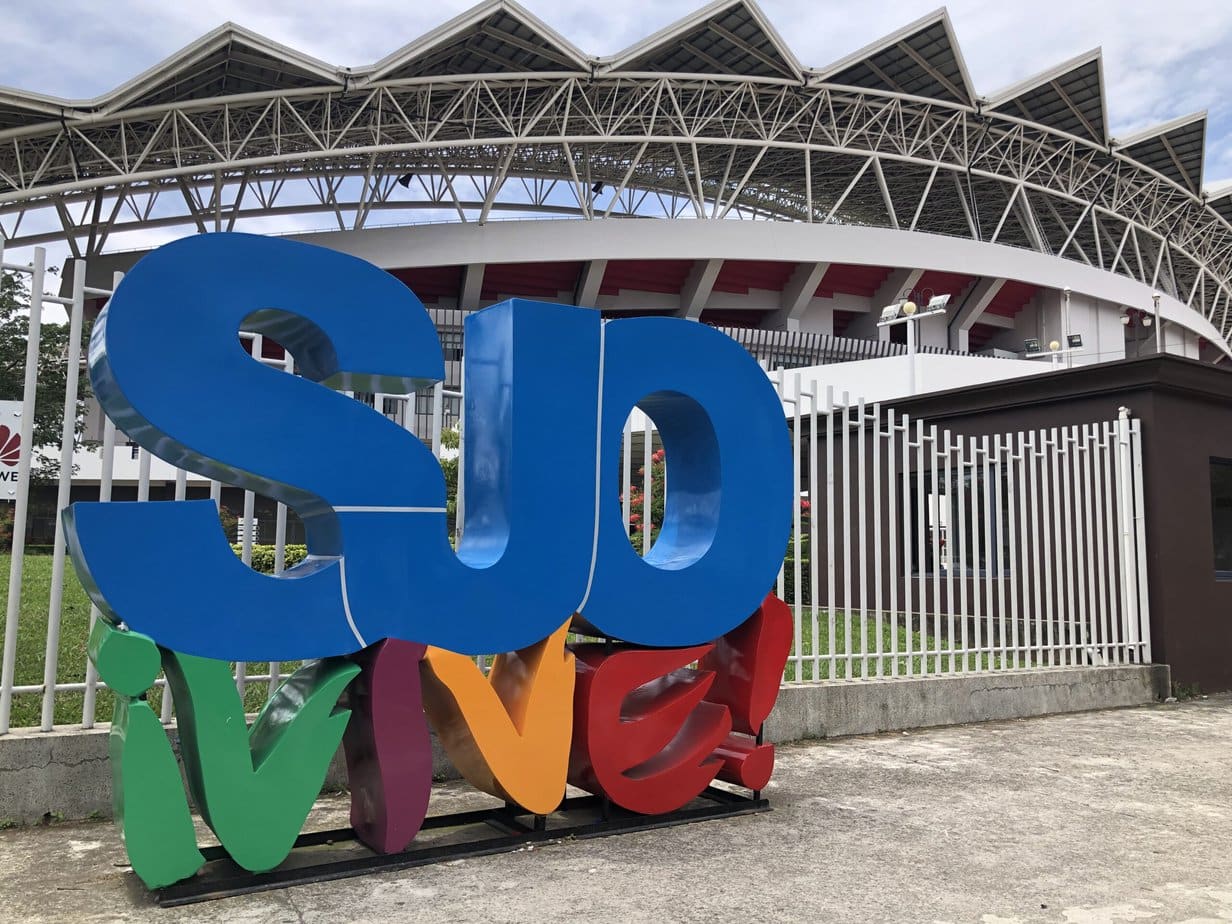
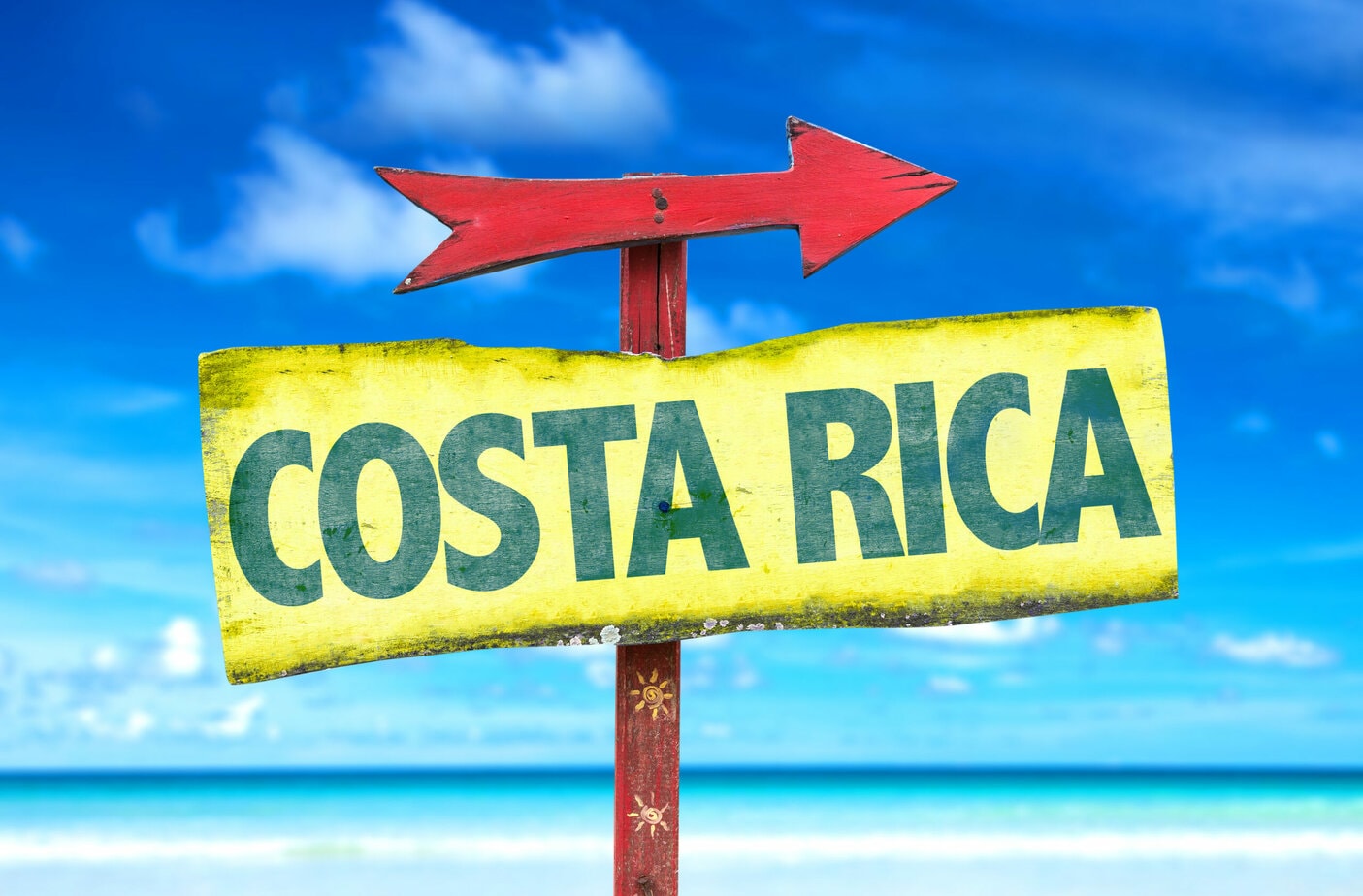
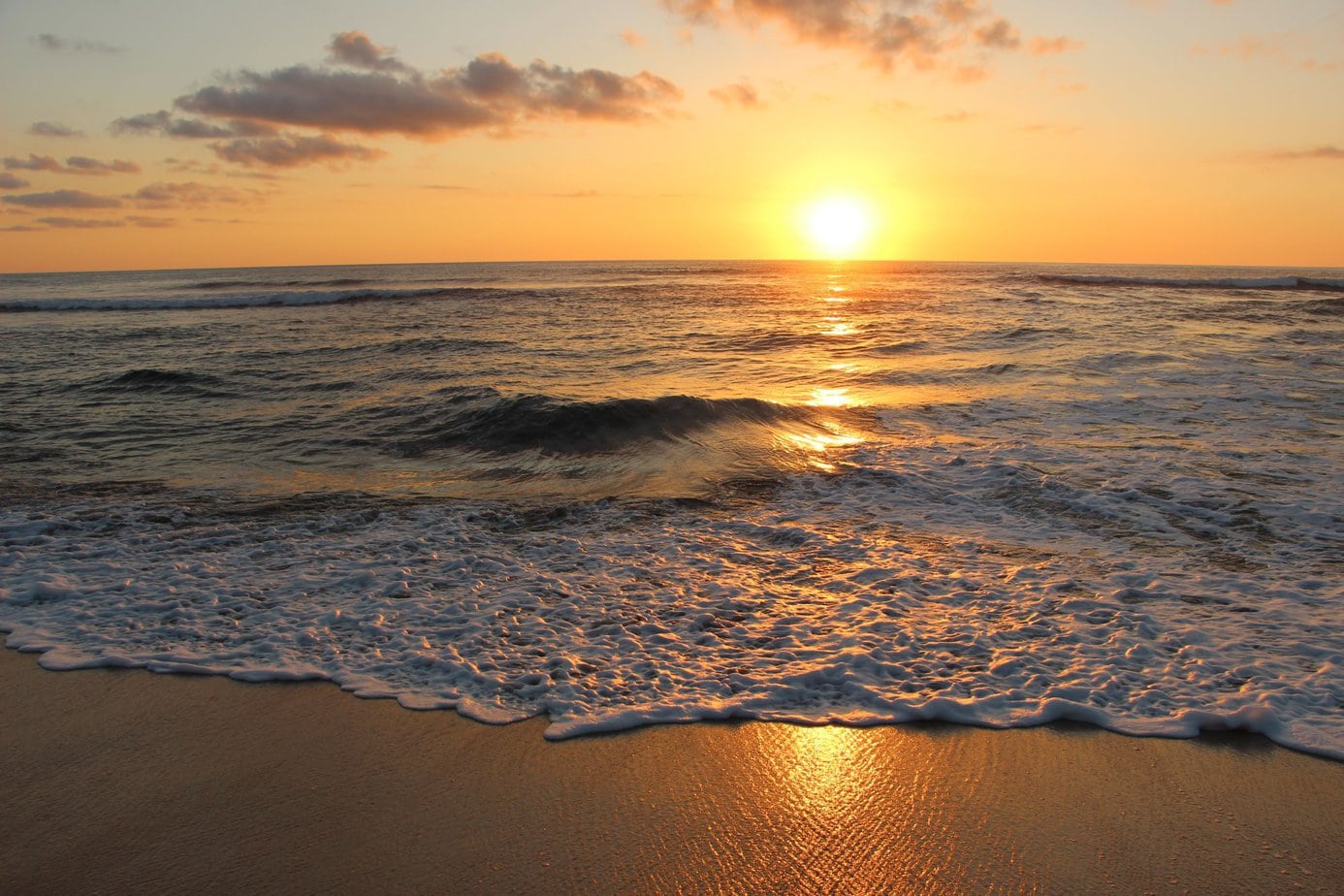
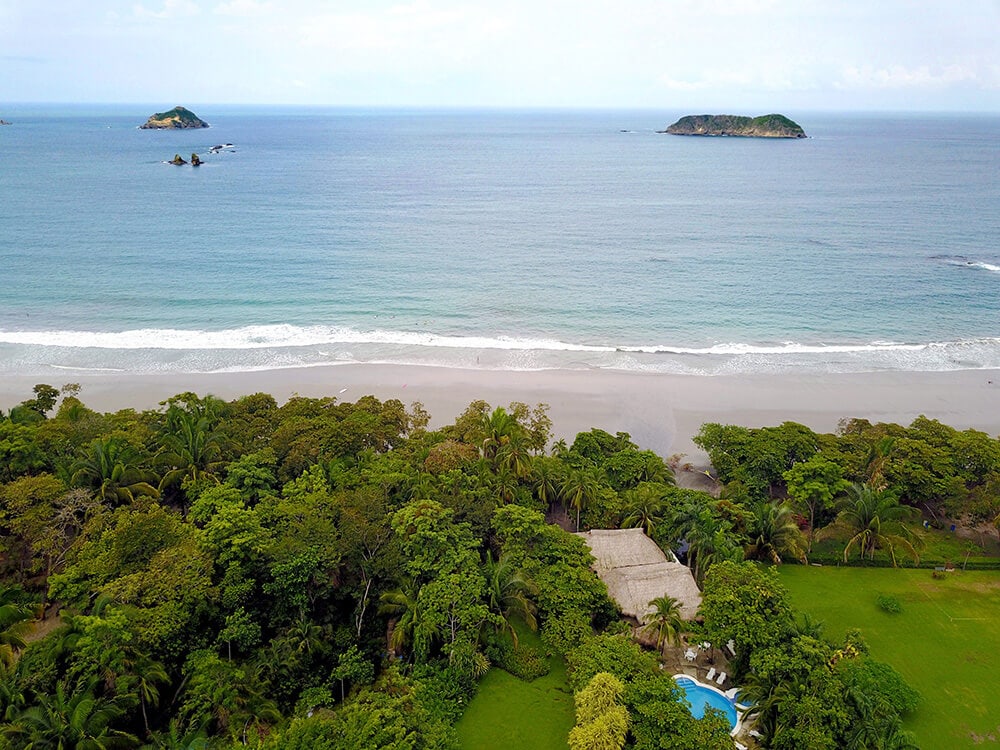
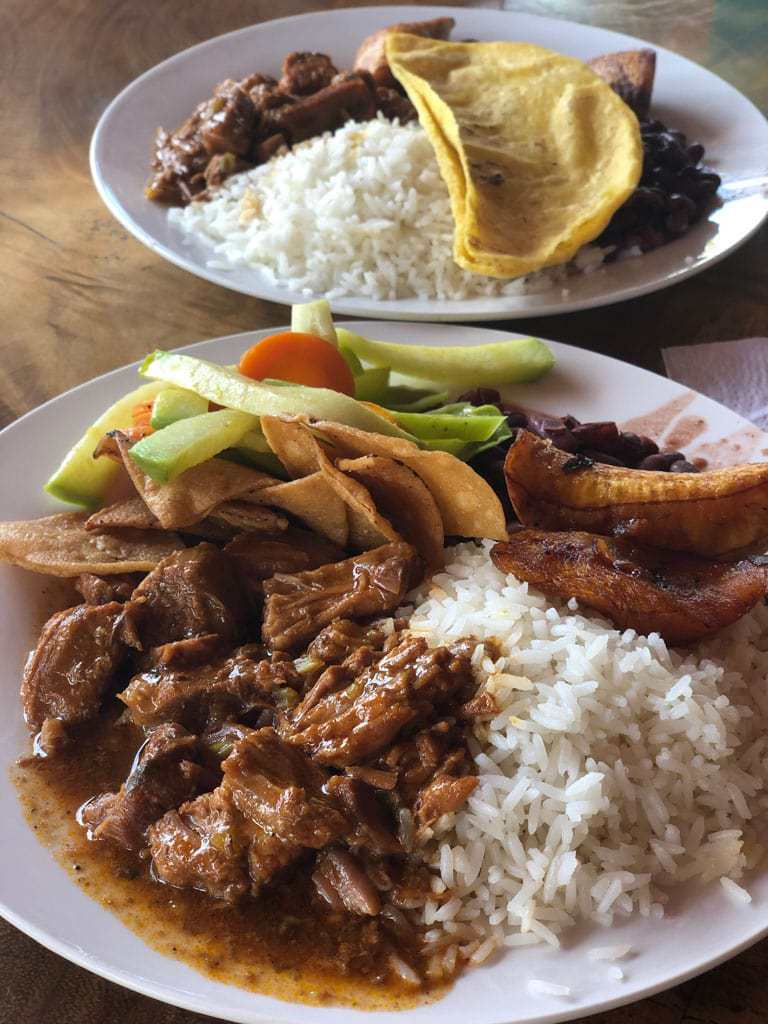
Love it………….